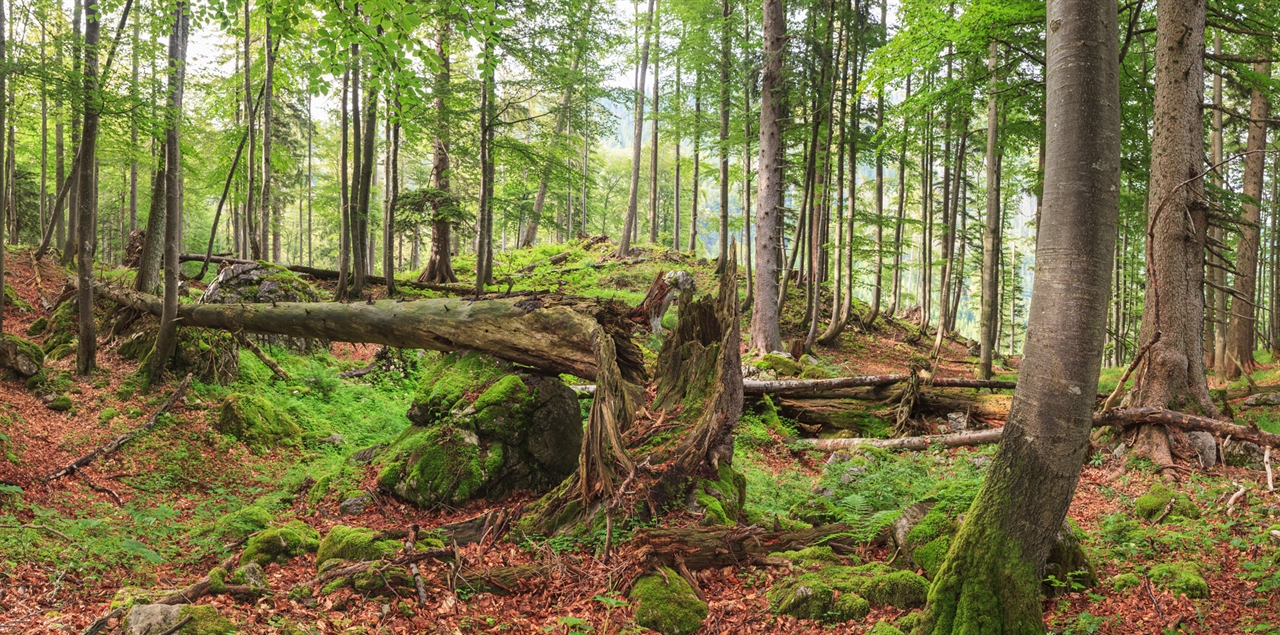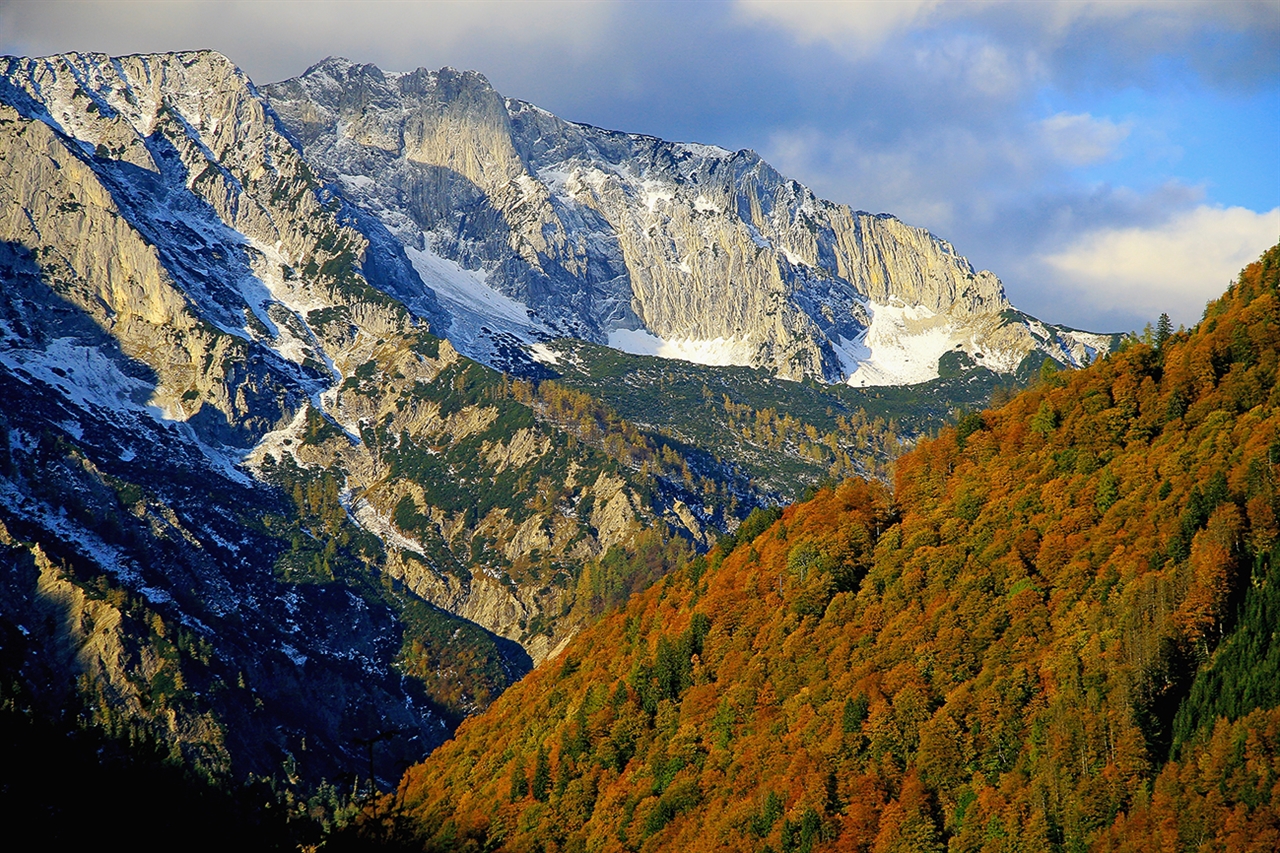

Austria´s first World Natural Heritage
Nominated beech forests in the Kalkalpen National Park
The nominated beech forests in the national park are characterised as follows:
• Large and original - 5,250 hectares of World Heritage area, including 400 hectares of primeval forest cells with rare primeval forest species
• Ancient - almost three quarters of the forests are older than 140 years, of which 23 % are older than 200 years and 5 % are even older than 250 years. The oldest beech has an age of 548 years.
• Natural - around 90 % of the World Natural Heritage area is classified as natural and close to nature.
• Diverse - 6 different beech forest communities range from 390 to 1,450 metres above sea level and cover the typical beech forest spectrum of the area.
• Dynamic - natural processes, especially avalanches, characterise the beech forest ecosystem.
• Contrary - the common occurrence of beech and larch within a stock is made possible by constant disturbances (avalanches, snow gliding).
 The beech forests of the Kalkalpen National Park and the primeval beech forest of the Dürrenstein Wilderness Area represent the beech distribution area of the Alps. Together, the two protected areas bring about 7,120 hectares of beech forests into the World Heritage Site.
The beech forests of the Kalkalpen National Park and the primeval beech forest of the Dürrenstein Wilderness Area represent the beech distribution area of the Alps. Together, the two protected areas bring about 7,120 hectares of beech forests into the World Heritage Site.
Download:
 UNSECO World Heritage Beech Forests National Park Kalkalpen
UNSECO World Heritage Beech Forests National Park Kalkalpen
World Natural Heritage Ancient & Primeval Beech Forests of Europe
European beech forests only exist in Europe. After the Ice Age, beech spread over large parts of Europe which shaped the appearance of an entire continent in a way that is unique in the world. From the sea coast of northwestern Europe to the European mountains, the beech formed forest communities. The diversity of forest types and beech forest inhabitants is as diverse as the locations: more than 10,000 animal, plant and fungal species find their habitat here. Today, Europe's natural beech forests have been reduced to only a few areas, making their protection all the more important.
The uniqueness and at the same time protection worthiness of the beech forests has been recognized by UNESCO with the award as a World Natural Heritage Site. Around 91,000 hectares of the last old beech forests and primeval beech forests in Europe are now included in the list of World Heritage Sites like the Yellowstone National Park or the South Tyrolean Dolomites. The registration of a total of 51 beech forest protected areas within 18 European countries represents an enormous success for the protection and conservation of beech forests.
Ancient and Primeval Beech Forests of the Carpathians and Other Regions of Europe: whc.unesco.org/en
